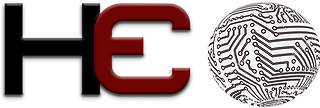Get with the "Program"... with Multitasking!
- Justin Hathaway
- Jul 6, 2016
- 4 min read
Computer and software technology evolve quickly. While this allows us to enjoy the best of web technology; integrated and interactive videos, webpages specifically tailored just by the last page you visited, rapidly updated content, the latest 3D graphics, robust productivity software suites and much more - for many computer users, this can mean slow loading webpages, sluggish swapping between programs and windows, freezing, slow OS boot time and poor multitasking capabilities!
Why can't your computer just be as fast and competent as it was when you first bought it? In some cases, both unwanted and wanted software gets downloaded onto your computer and adds itself to the growing list of startup items launched every time your computer boots.

While it may be desirable to have some of these programs installed on your computer, it's not always desirable to have them running all the time, every time you are on your computer. This is especially true if that means your computer will waste valuable time and resources opening these programs along with everything else the computer needs to provide a good user friendly experience. Having these programs consistently running certainly gives your computer more to do and as both you and I do, computers have limitations on the amount of work they can cover at a certain amount of time. Given enough work to its limitations will certainly slow down a computer.
Given the proper maintenance and prevention techniques, these programs can be managed through exploring different startup options available with your OS. However, more often than not, managing startup items for many computers may not be enough to effectively free up enough resources to take advantage of all that computer technology has to offer us. When interacting with a few programs at a time is beginning to bog down your computer and making simple tasks like "saving" a word document painstakingly long, sure, you can close a few programs down to assure your computer has less to focus on, but if you're like many and circumstances at times necessitate the need to have multiple robust programs running, it may be time to upgrade your system's RAM, or (R)andom (A)ccess (M)emory.
"The good news is virtually all computers, including laptops, are capable of being upgraded..."

RAM is volatile memory capable of temporarily storing portions of programs and the OS at the forefront of your computer's resources so that when you pull up a window and attempt to perform a task, the computer performs little, if any, work to get things going again. These days, if you're browsing the web with a few tabs open, working in a word document, and have an e-mail application open, i.e. Microsoft Outlook, Mozilla Thunderbird, your computer could be consuming > 5.0 GB of RAM. While most computers today come equipped with about 2 GB - 8 GB of RAM, you may have a computer a few years old that is no longer handling the moderate to heavy loads like it used to.

These tasks are very general tasks accomplished by most people and it wouldn't be unreasonable to expect a computer to effectively and efficiently handle these tasks. Unfortunately, most individuals give in to the "ease" of making a new purchase instead of investing a little bit of time troubleshooting their current system to see where optimizations can be made (for dramatic cost savings).
The good news is virtually all computers, including laptops, are capable of being upgraded to keep up with the demands of quickly evolving and ever improving software suites and robust web applications so that you can continue to enjoy the latest technological trends at a much reduced cost to you.
Below is a rough reference to the prices of DDR3 and DDR4 RAM to give you the idea of how much adding 4 GB of RAM to your current build would cost, not including labor if you hired a specialist for installation. As you can see, prices are significantly cheaper to purchasing a new computer so if you're in the market to purchase a PC based on your current build's performance, look into installing a bit more RAM to see if this is a viable solution to getting your build back on its feet for optimal performance.
Don't know what type of RAM you need or how much your build can handle?
Check out Crucial System Scan which identifies the hardware compatible with your system.
2.1 Prices of RAM from Previous and Current Generations at Different Speeds*

For a limited time, Hathaway Electronic Solutions will handle the physical installation of the new hardware and throw in a free PC tune up all at a cost of $15**.
*Prices were taken as of July 6, 2016 from Amazon.com and NewEgg.com and are presented as only references for current pricing trends and not guaranteed in any way.
**$15 includes in-home installation of your new hardware and free system analysis and tune-up of your computer's software environment along with free training on how to best maintain your personal system. The cost of the parts desired for your particular system can vary drastically depending on the compatibility with your current hardware and though prices can change from time to time, the price chart above may provide you with a good idea of estimates for your build.














Comments